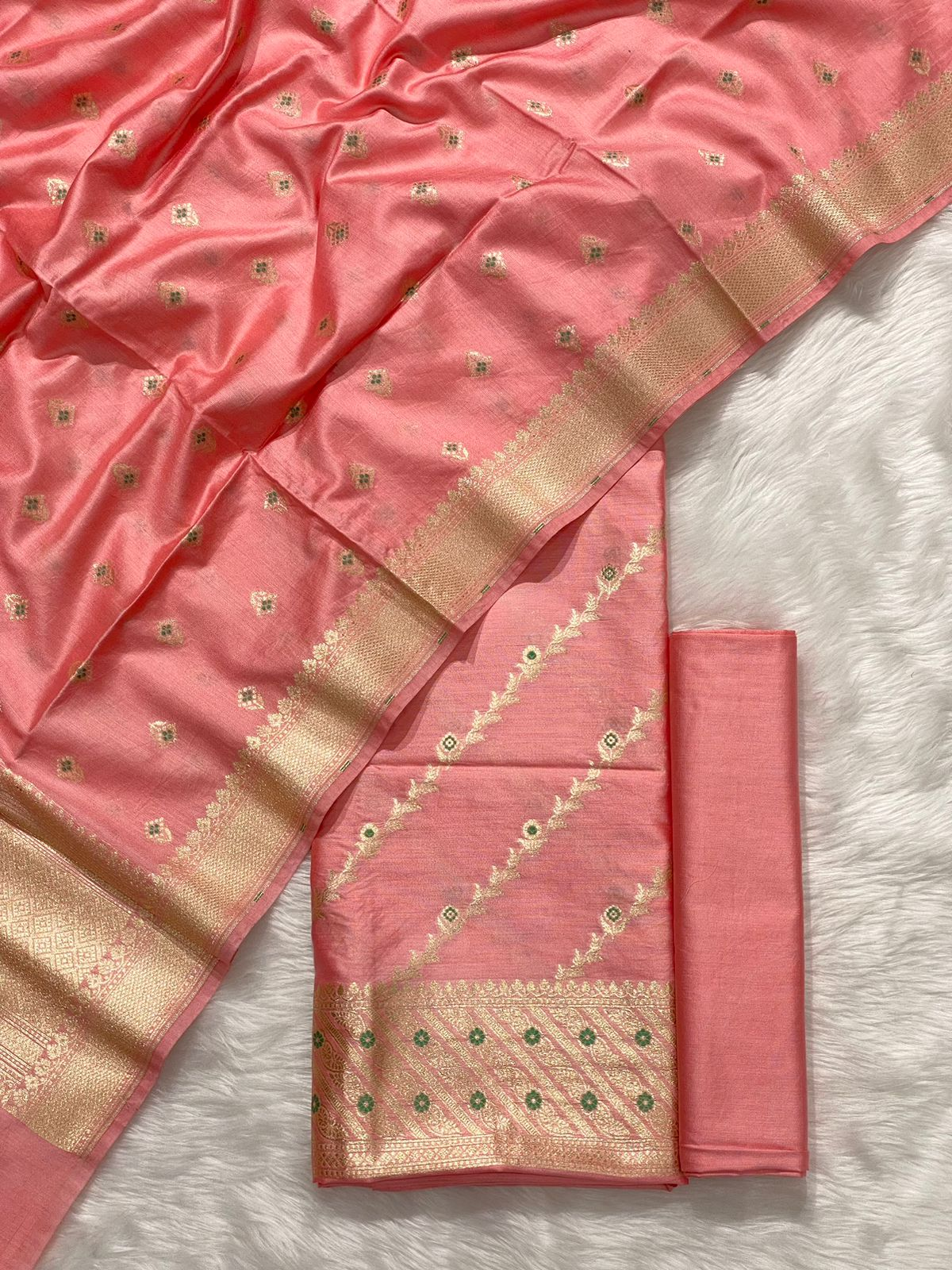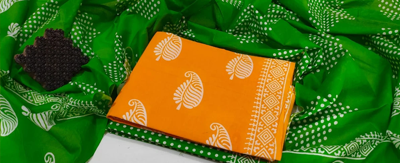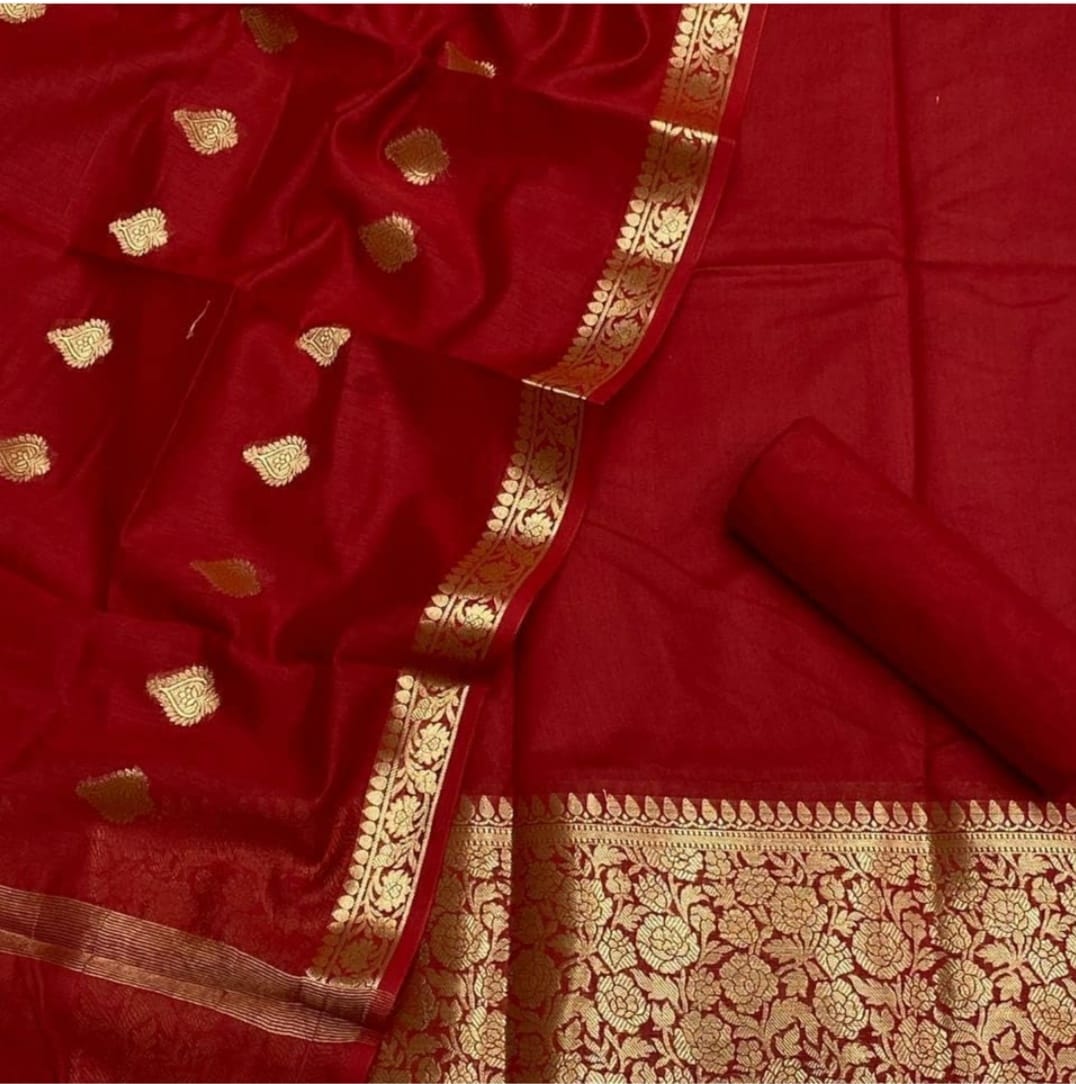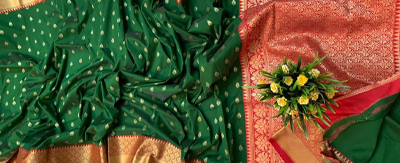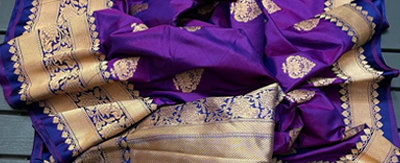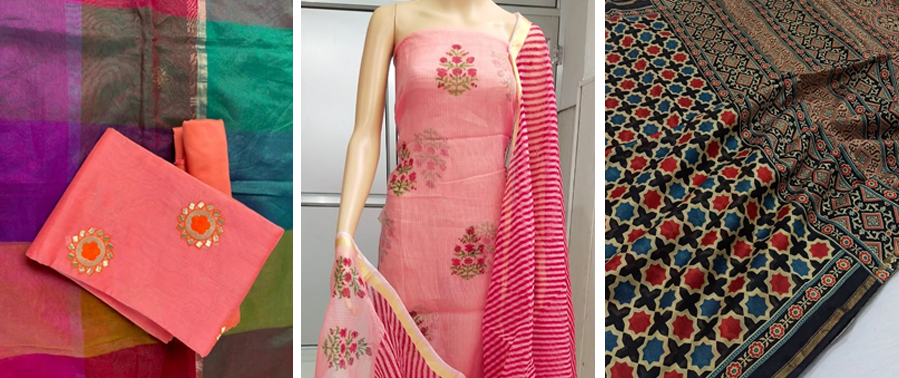Reflection of Royalty of Rajasthan through its Crafts
The Royal state of Rajasthan, formerly known as Rajputana due to its deep-rooted history attached with the Royal Rajput families. Irrespective of its sterile desert land, the state of Rajasthan is often called vibrant and colorful due to its vast and vivid culture. A huge role in that is played by the textile crafts of Rajasthan.
The textile crafts of Rajasthan are an authentic amalgamation of generations of experimentation with fabrics and crafts, and a sublime eye for detail. The local craftsmen of Rajasthan have excelled at various craft forms like Leheriya, Bandhani, Block Printing, to name a few. And it wouldn’t be wrong to say the generations of craftsmen and weavers have evolved the crafts of Rajasthan!
We at Fabpersona strive every day to create a reflection of the true crafts and craftsmanship of India through our catalog of ethnic ensembles for women. Our collection of sarees and unstitched suits are created using the various crafts of India and among them, you’ll quite probably find an extensive curation of crafts of Rajasthan! Let’s take a look at the Royal crafts of Rajasthan through the handcrafted ensemble of Fabpersona.
-
The Chronicles of Kota Doria

You must have come across handwoven checkered prints on the pure fabric of cotton and silk. This technique of handweaving is gloriously famous in the Kota region of Rajasthan and hence its name, Kota-Doria!
Kota Doria fabric is one of the most unique forms of fabric which is quite famous for its distinctive quality of the yarn, light & breathable feature that is a result of a particular form of starch that is wrapped on the yarn. This kind of technique is one of the most laborious and time taking forms of weaving but the end result of the intricate checkered patterns is quite serene! The pattern is also known as khat, khan, Chokhdi, and checks in different parts of
India. -

-

-
Love for Leheriya

One of the most vibrant and intricate craft forms of Rajasthan is Leheriya. It is created using the distinctive technique of tie & dye with the help of dies made using organic colors. The word Leheriya is inspired by the Hindi word ‘Leher’ meaning waves which are also reflected in the Leheriya or the wavy pattern on the fabric. Waves of happiness, joy, vibrancy, and vividity come as a package with this art form. This craft carries with itself the love and the excellent skill set of all the craftsmen. Artists pour immense love while transcending this craft on a fabric. The fabric is knotted and then dyed in beautiful, vibrant colors.
You’ll experience the authenticity of the craft through our collection of sarees and unstitched suits which are a perfect amalgamation of vibrancy and color that will surely bring joy to the art of dressing up
-
The happiness of Handblock Prints

The deep-rooted history of hand block printing is quite a fascinating tale. It goes back to thousand years back when this craft of printing was brought from China and the craftsmen of India evolved it according to the vivid culture of Rajasthan. The artisans use wooden blocks which have intricate details embodied on them. The designs are carved by the artisans with immense passion and an eye for detail. The blocks are then dipped into the desired shade than the artisans rhythmically place the block on the fabric, after which comes a thudding yet rhythmic sound. The richness of this craft form is transversed to the Fabpersona collection of hand block printed sarees and unstitched suits which are a celebration of this calming handcraft of hand block printing.
-

-

-
Beauty of Bandhani

Bandhani or Bandhej is a well-known and widely celebrated Indian craft form that is another form of tie and dye which is created on the fabric by the local craftsmen. Bandhani which also means to tie in Hindi delivers a circular pattern. It is considered a tedious but rewarding task. Generations of artisans and craftsmen have excelled at the art of Bandhani and it wouldn’t be wrong to say that it is also evolved yet holds its touch of purity. Many artists even use natural dyes from various plants and vegetables. Depending on the kind of fabric and the dyes are used, the pattern on the fabric stays for centuries making it apt for the heirloom.


